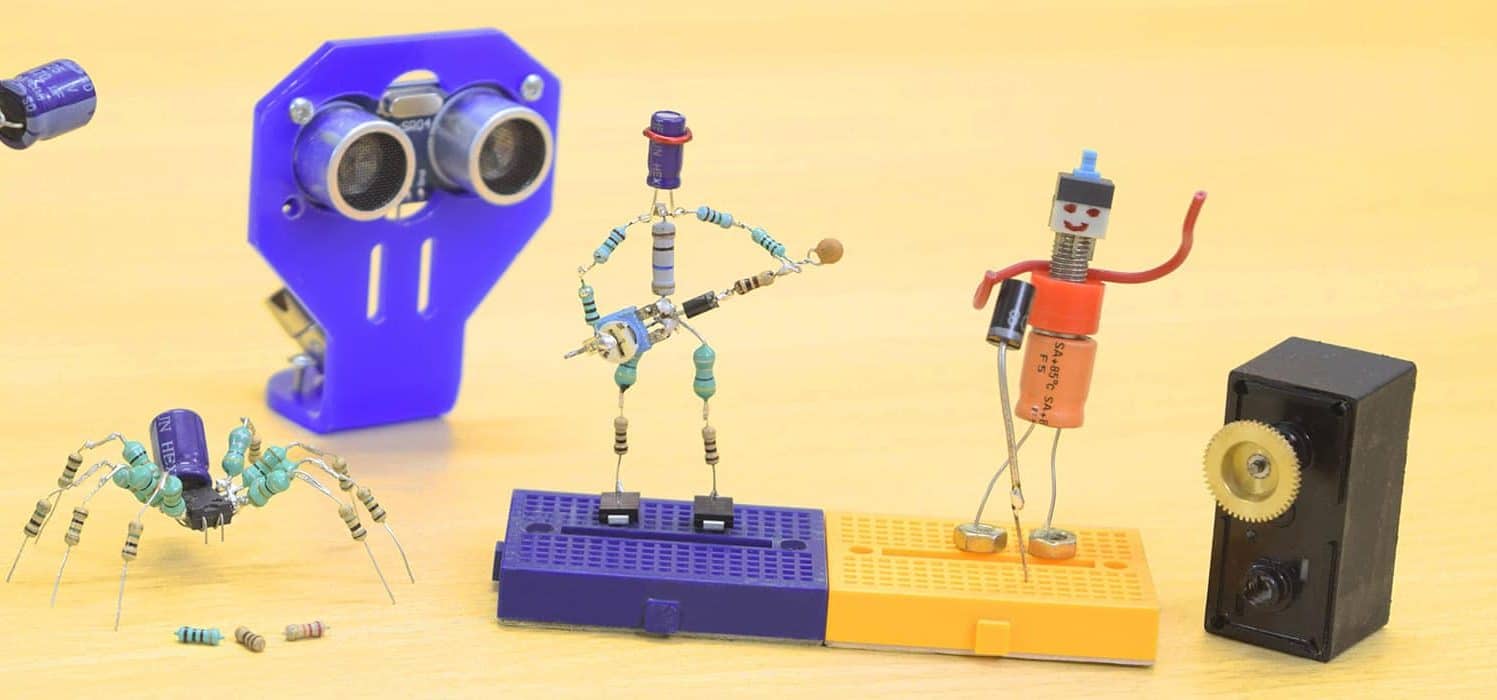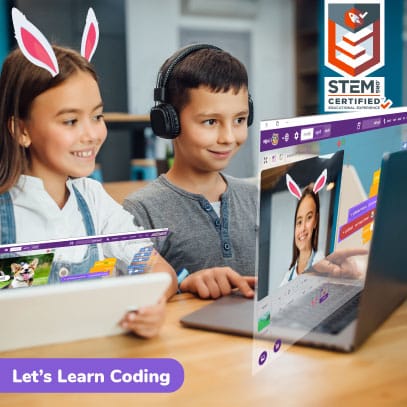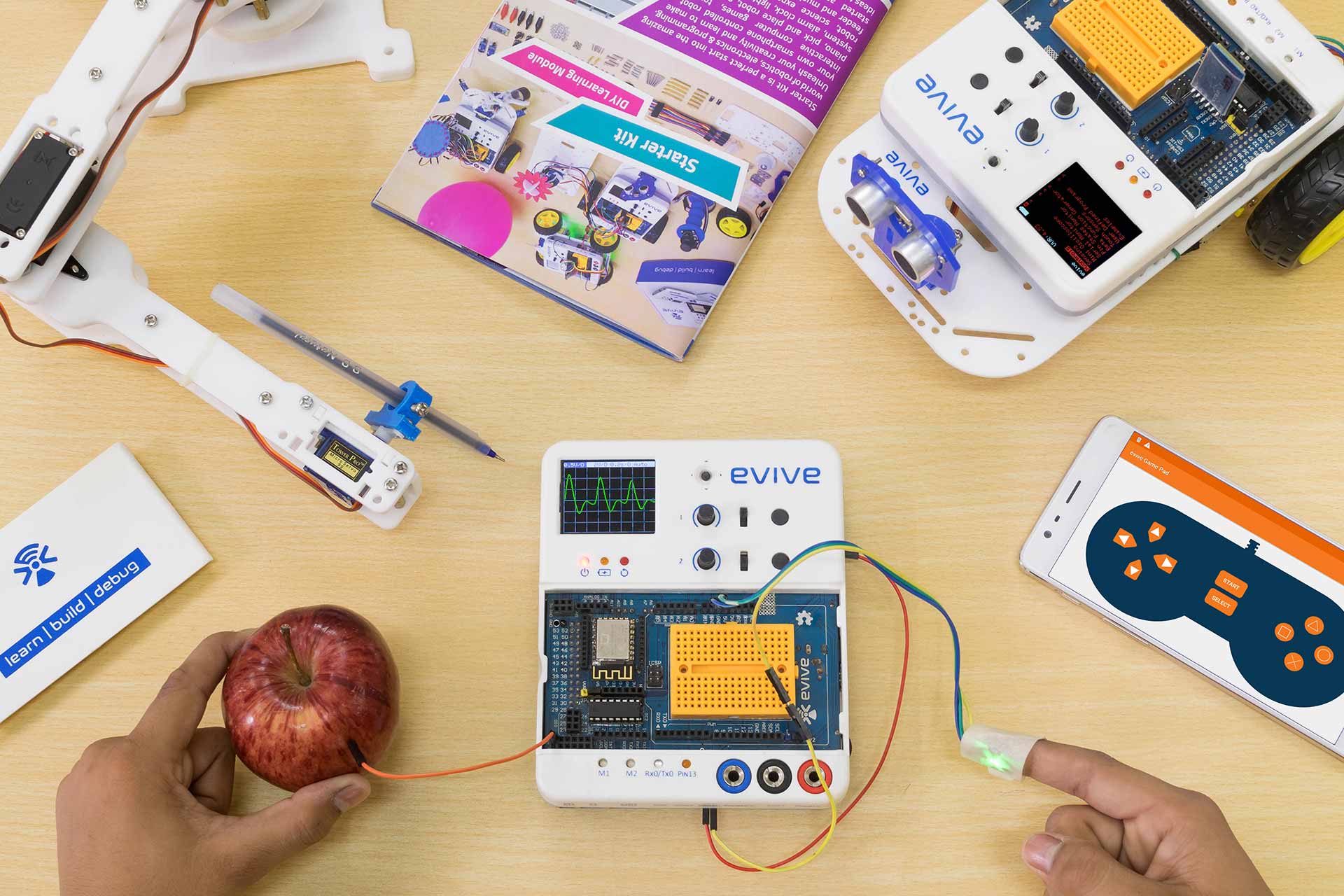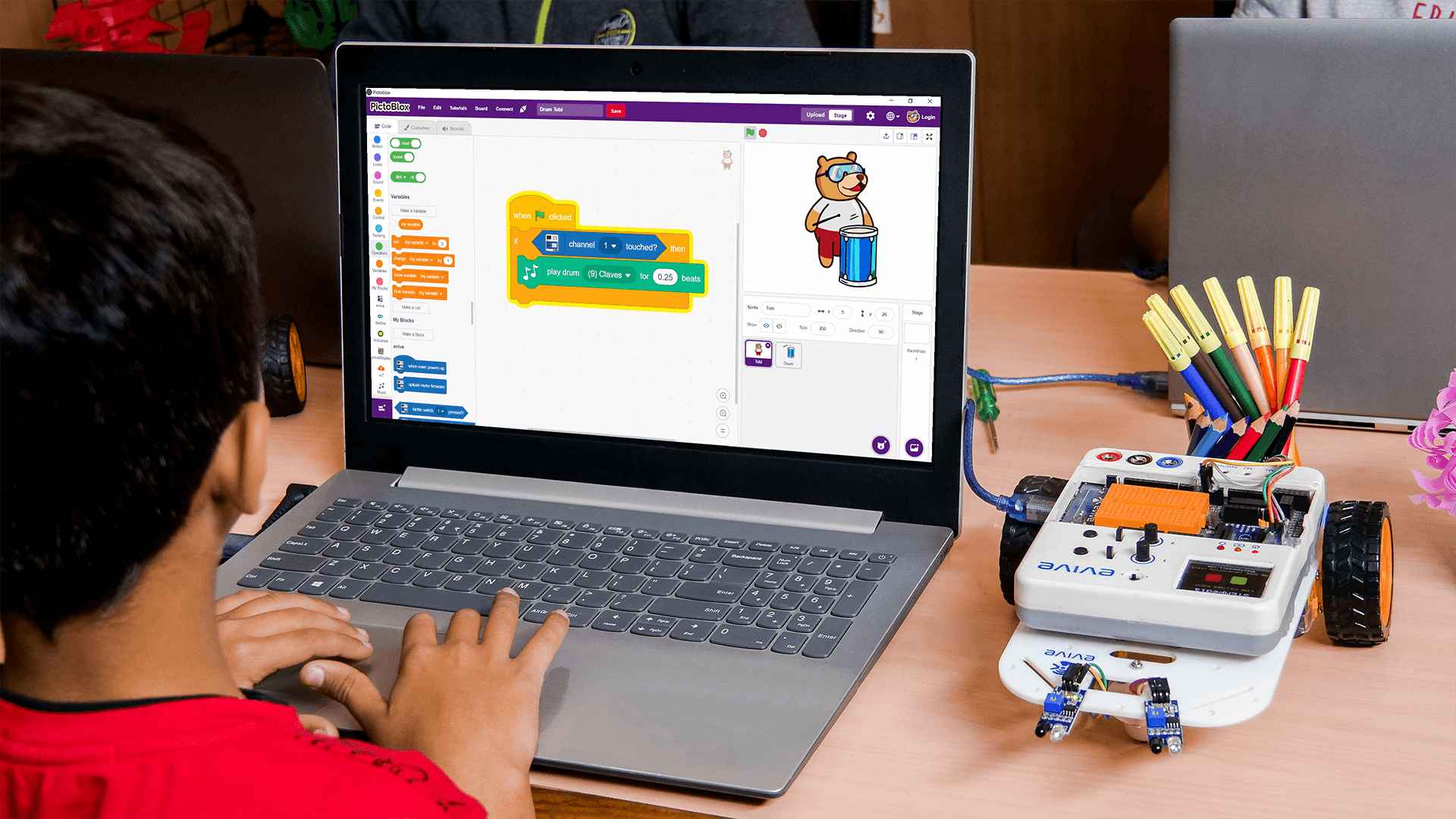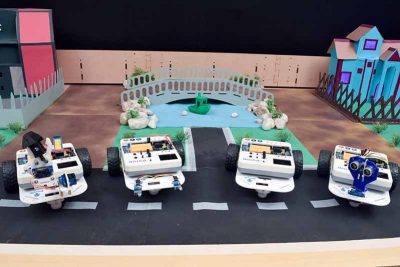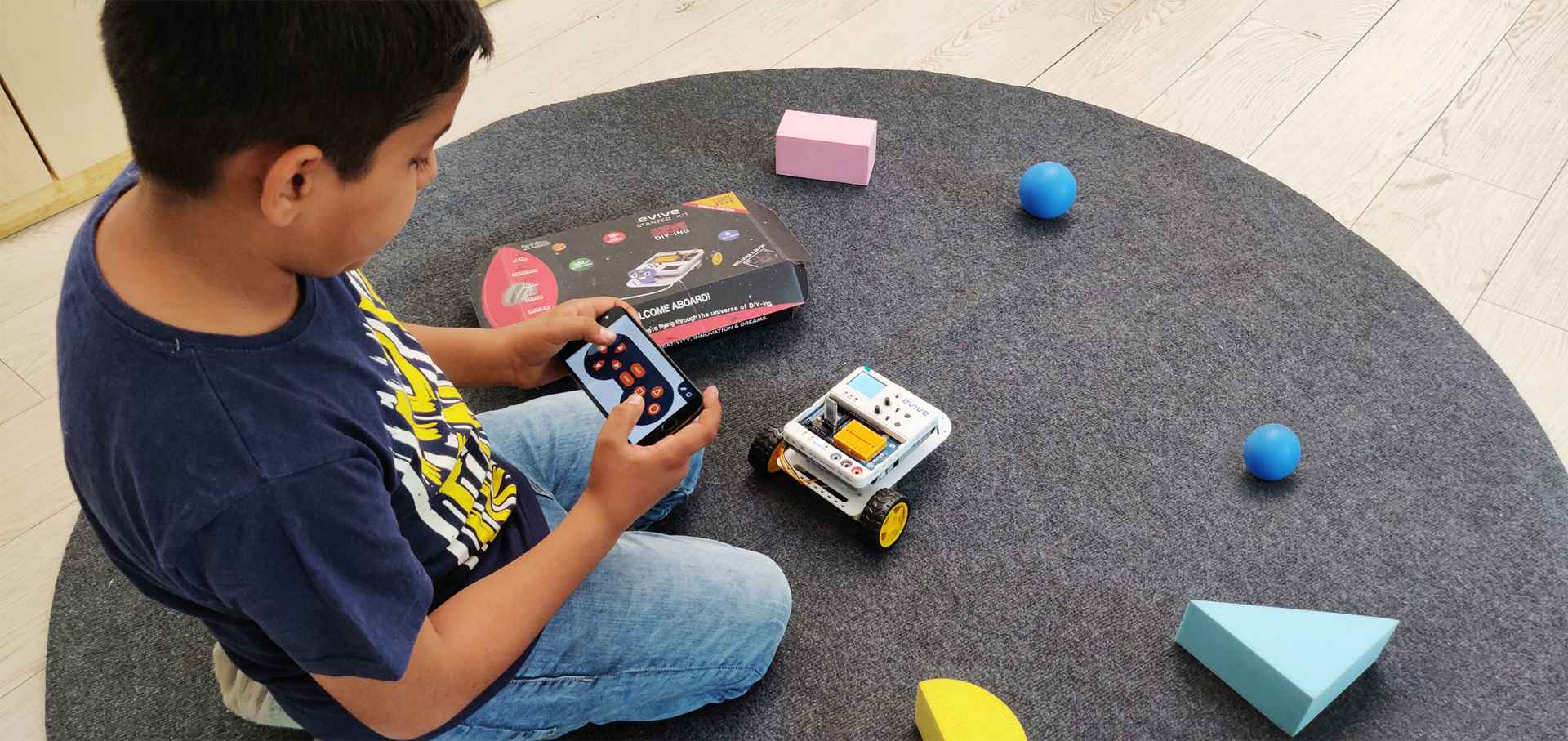
Electronics for Kids – Level 1 – Curriculum

Introduction
Electronics for Kids – Level 1 is a part of the specially-designed middle school STEM curriculum curated by curriculum experts for teaching the basics of electronics to kids through activities such as glowing an LED, making a DIY turntable, control DC and servo motors, using touch sensors to classify objects and conductors and insulators, etc. With its clear explanations and an assortment of exciting activities for kids, Electronics for Kids – Level 1 will have students building their own DIY electronics projects in no time.
- Prerequisites: None
- Kits Required: Evive
- Programming Software: PictoBlox (Block Coding)
Learning Outcomes
After completing Electronics for Kids – Level 1, students will have a basic understanding of electronics, circuit design, actuators and sensors with the help of a wide variety of STEM activities.
Apart from the aforementioned learning outcomes, this STEM curriculum will also help them develop skills such as problem-solving and debugging techniques, DIY-ing, teamwork, and creativity.
Curriculum Lesson Plan
Module 1: Basics of Electronics
Students will be introduced to the building blocks of electronics – voltage, current, resistance, Ohm’s Law, how circuits work, and the basics of LEDs with the help of hands-on STEM activities based on evive.
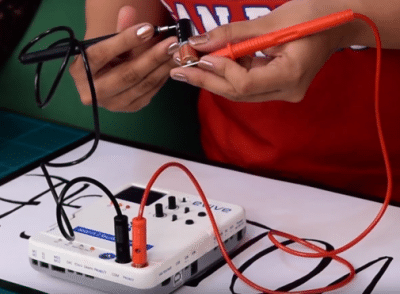
Lesson 1.1: Voltage
- Objective: What is electronics? What is an electronic circuit? What is voltage and how to measure it using evive?
- Activity: Measuring the voltage of a battery using evive.
- Learning Outcome: Student will learn about programming, PictoBlox interface.
- Mode: Practical
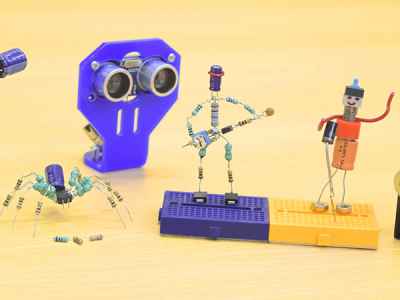
Lesson 1.2: Basics of Electronics – Current & Resistor
- Objective: What is current? What is resistance? How to calculate the resistance of a resistor using color code?
- Activity 1: Calculating the resistance of 5 unknown resistors using color code.
- Learning Outcome: What is current, resistance, conductors and resistor | How to identify the value of the resistor using color code.
- Mode: Practical
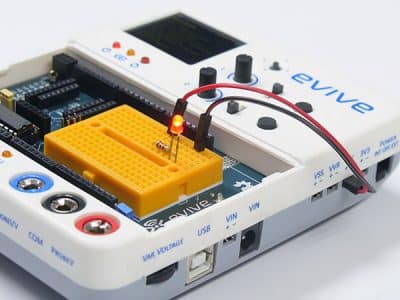
Lesson 1.3: Ohm’s Law and LED Basics
- Objective: What is the relationship between voltage, current, and resistance and how to use it to light up an LED?
- Activity: Making a circuit to glow a LED. Calculating the minimum resistance required to glow the LED safely.
- Learning Outcome: Ohm’s Law: The relation between voltage, current, and resistance.
- Mode: Practical
Module 2: Basics of Actuators
Students will learn how simple actuators like the DC motor and servo motor work with the help of hands-on STEM activities based on evive.
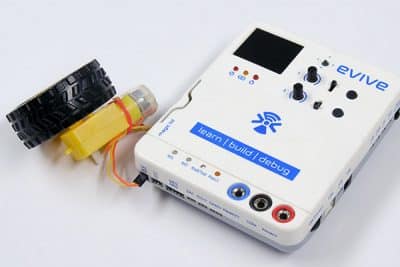
Lesson 2.1: Introduction to DC Motors
- Objective: What are DC motors? What’s inside a DC motor? How to control its direction and speed using evive?
- Activity 1: Controlling the direction and speed of a DC motor using evive.
- Learning Outcome: What are actuators and different types of actuators | How to control a DC motor speed and direction of rotation using evive.
- Mode: Practical

Lesson 2.2: DIY Turntable
- Objective: How to make a DIY turntable using a DC motor?
- Activity: Making a turntable to create beautiful patterns.
- Learning Outcome: In this activity, students will learn how to make a small DIY turntable, whose speed and direction can be controlled using evive’s slide switch and potentiometer.
- Mode: Practical
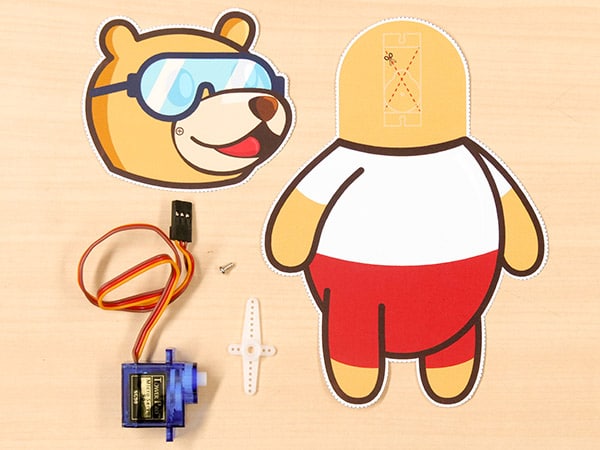
Lesson 2.3: Introduction to Servo Motors
- Objective: What are servo motors and why are they important? How do they work?
- Activity 1: Moving the head of a cutout with the help of a servo motor and evive.
- Learning Outcome: Why do we need Servo motor and what are they? | Components of a Servo motor | How to control a servo motor using evive menu.
- Mode: Practical
Module 3: Basics of Sensors
Students will learn how sensors work and how to visualize the output of different sensors with the help of hands-on STEM activities based on evive.
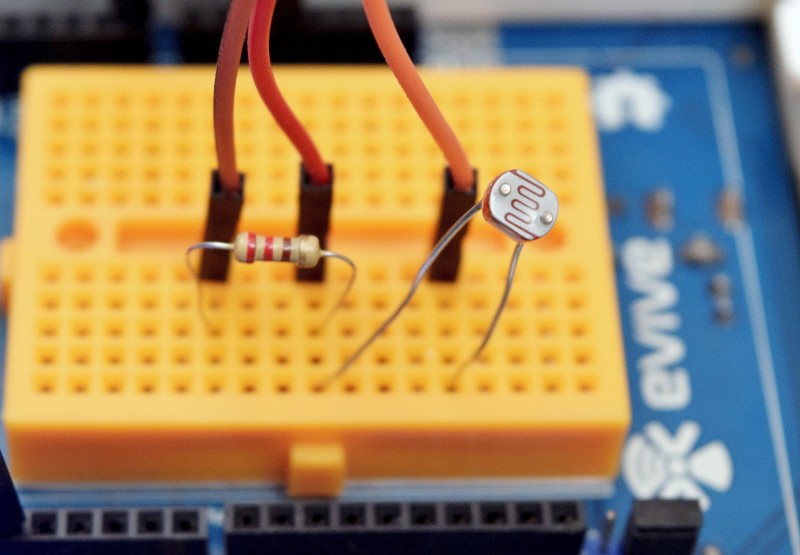
Lesson 3.1: Introduction to Sensors
- Objective: What are the sensors? How are they categorized based on the output they provide? How to read digital and analog sensors using evive?
- Activity 1: Understanding the working of evive's Pin State Monitor.
- Activity 2: Visualizing the light sensor using evive.
- Learning Outcome: What is sensor? | Classification of sensor | What is Light Dependent Resistor and how it works | How to visualize sensor output on evive.
- Mode: Practical
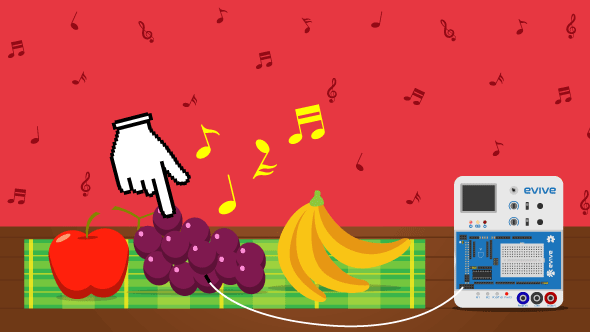
Lesson 3.2: Touch Sensor – Conductor or Insulators?
- Objective: What is a conductor? What is an insulator? How does evive’s touch sensor work?
- Activity 1: Categorising different objects into conductors and insulators using evive capacitive touch sensor.
- Learning Outcome: What are the conductors, their property and example of conductors? | How does the capacitive touch sensor work?
- Mode: Practical
Capstone Project
The final lesson of the Electronics for Kids – Level 1 curriculum for schools is where students get to apply all the concepts they have learned in the previous sections to make a project to solve a real-world problem of their choice.
What will you need to Conduct this Curriculum?

STEM Classroom Bundle
The perfect Starter Package for schools to implement STEM, electronics, and robotics education.
Contact Us
Implement this curriculum at your School / Activity Center!

